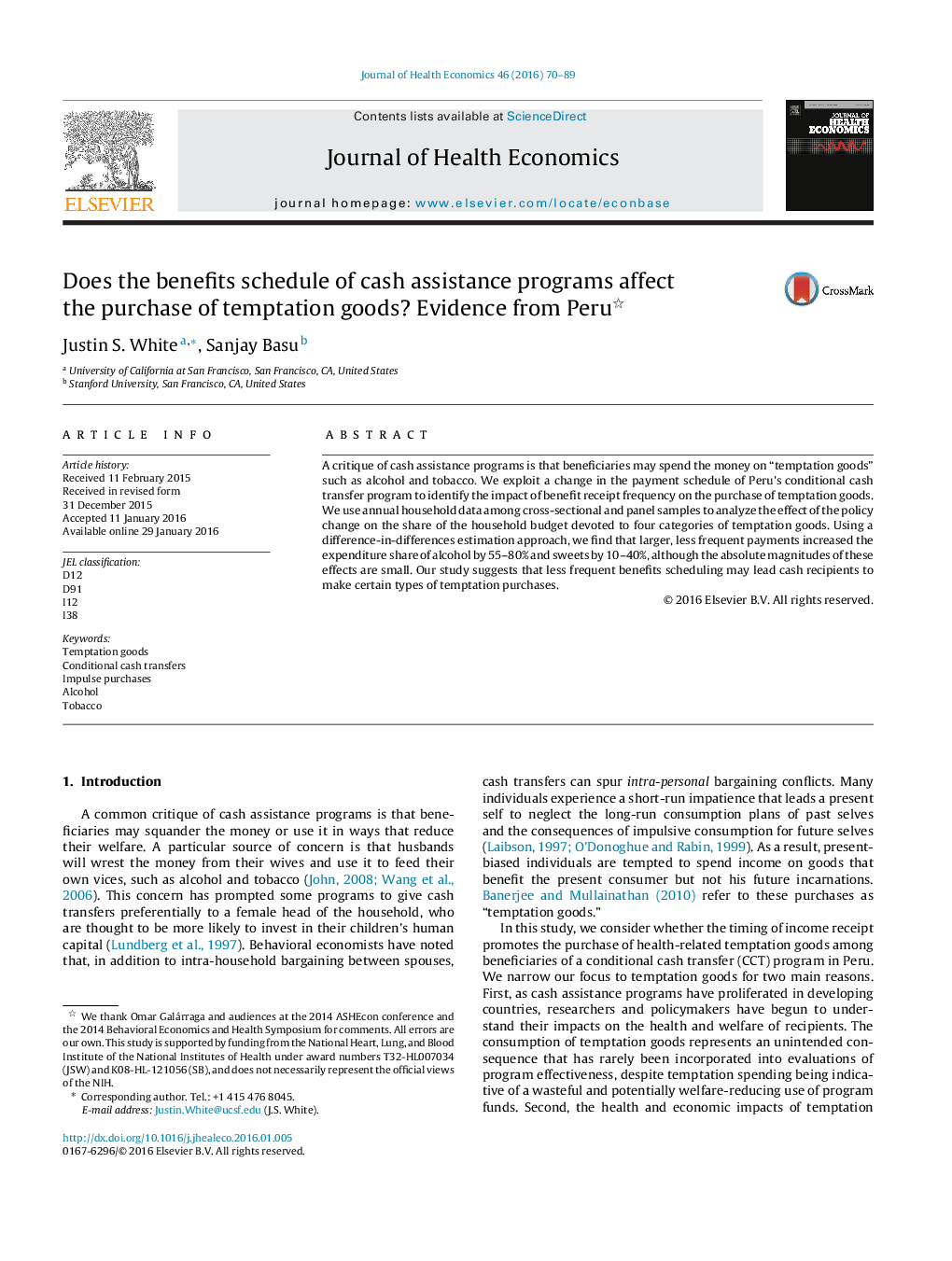| Article ID | Journal | Published Year | Pages | File Type |
|---|---|---|---|---|
| 961185 | Journal of Health Economics | 2016 | 20 Pages |
Abstract
A critique of cash assistance programs is that beneficiaries may spend the money on “temptation goods” such as alcohol and tobacco. We exploit a change in the payment schedule of Peru's conditional cash transfer program to identify the impact of benefit receipt frequency on the purchase of temptation goods. We use annual household data among cross-sectional and panel samples to analyze the effect of the policy change on the share of the household budget devoted to four categories of temptation goods. Using a difference-in-differences estimation approach, we find that larger, less frequent payments increased the expenditure share of alcohol by 55-80% and sweets by 10-40%, although the absolute magnitudes of these effects are small. Our study suggests that less frequent benefits scheduling may lead cash recipients to make certain types of temptation purchases.
Related Topics
Health Sciences
Medicine and Dentistry
Public Health and Health Policy
Authors
Justin S. White, Sanjay Basu,
